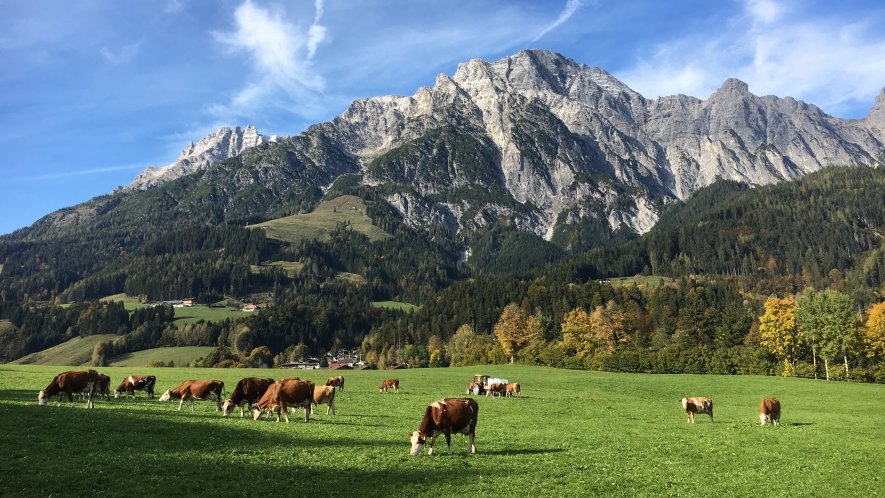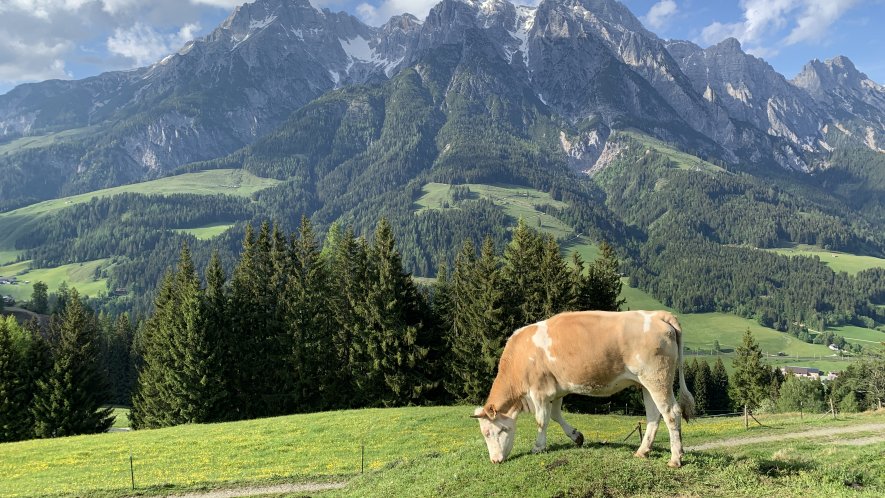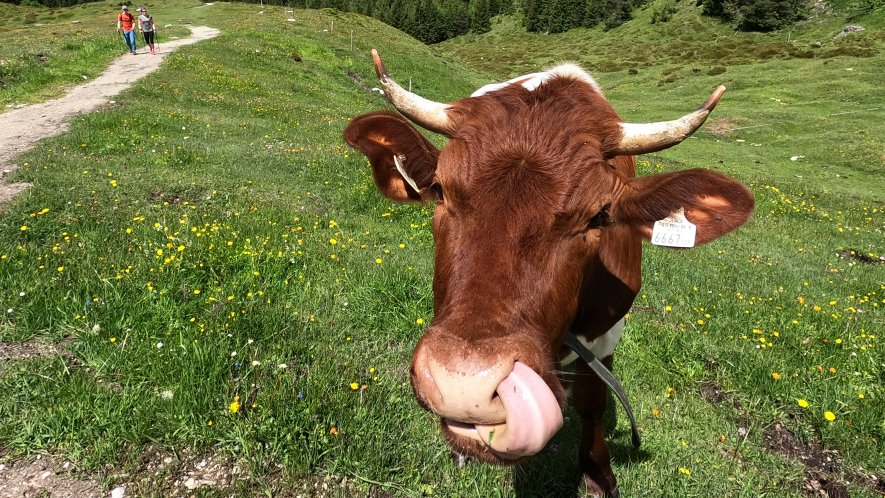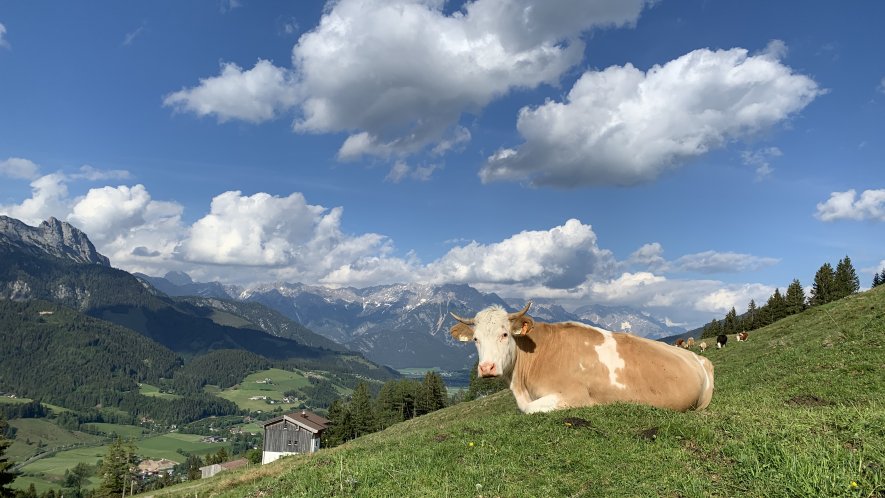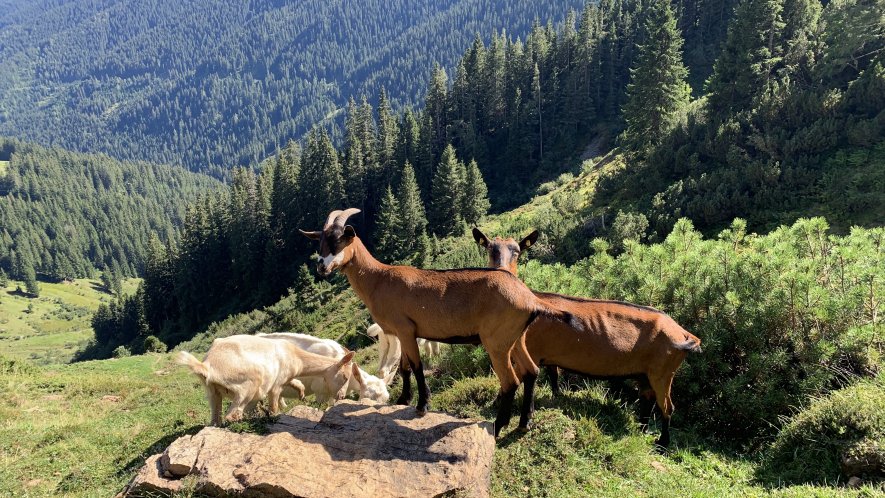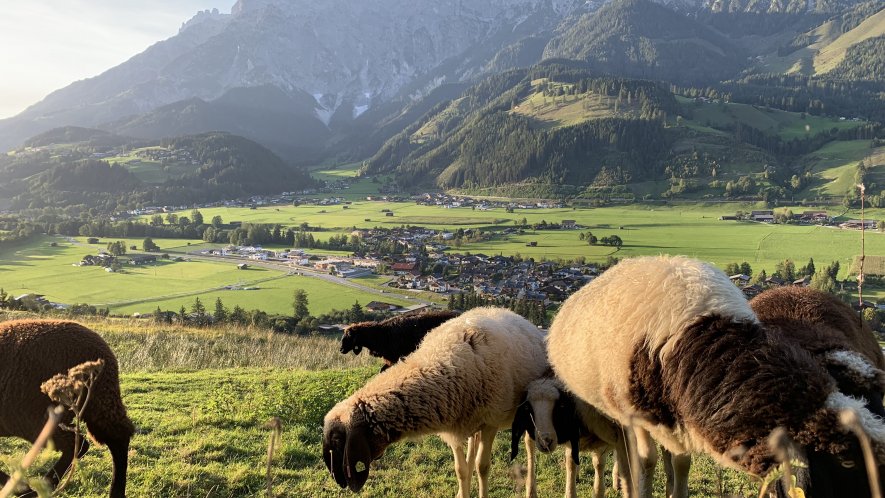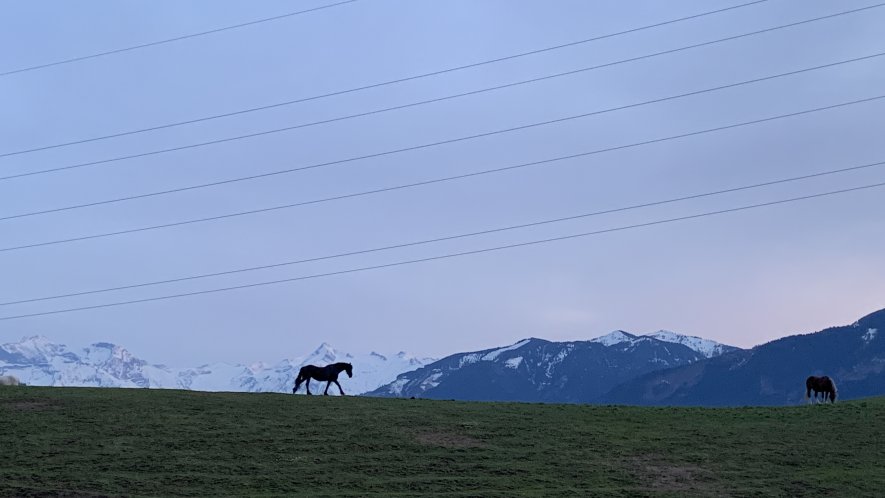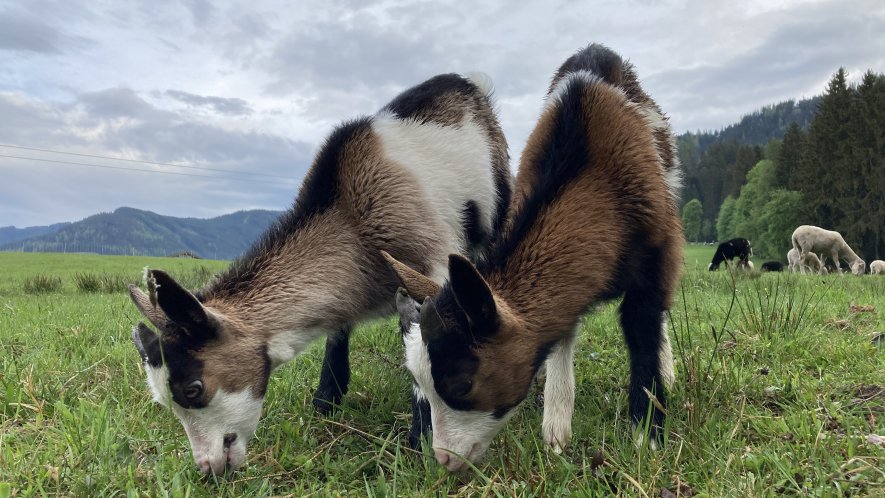Behavior with grazing animals - 7 tips from organic farmer and mountain pasture farmer Markus Stöckl
Are cows actually dangerous? More and more often you read about incidents in alpine pasture areas where hikers are attacked by grazing animals. But is it possible to protect oneself from such incidents? "There is no such thing as 100% safety, after all they are animals," says organic farmer Markus Stöckl. However, there are very good ways to keep the danger as low as possible. And these he reveals to us today.
1. Caution of cows with calves
The maternal instinct is powerful in cattle as well. Therefore, special care must be taken with cows with small calves; after all, mothers want to protect their calves. Such herds with calves consist of mother cows, which on the whole are somewhat less accustomed to close contact with people than dairy cows, which are usually less dangerous. And what about the bull? "A bull is normally no more dangerous than a cow with a calf, although young bulls are in principle less dangerous and angry than old bulls," says Markus.
2. Dogs on the leash
In principle, a leash obligation for dogs applies in the entire municipal area of Saalfelden and Leogang. So also when hiking on the pastures. If a herd of grazing cattle thereby comes up to one? "Then it depends on the dog, what to do. Depending on temperament, it may be more clever to let him go or to keep him on a leash," says Markus and recommends acting according to the situation.
3. Recognize the signs
Can you actually tell in advance whether a cow or a horse is in an attacking mood? In any case! With cows it is like that they look extremely attentively at the person, who comes past. If the cow wants to attack, it can also be that it paws with the front foot, lowers its head and turns sideways. Then great caution is required! With horses, you can recognize a bad mood by the way they put on their ears.
4. React correctly
The basic rule is to keep your distance from grazing animals. When approaching a pasture, you should not necessarily walk up to the herd, but walk alongside, possibly even avoiding it a bit. In no case should you go unnecessarily close and pet the animals or take photos. And what if an animal actually makes signs to attack or comes toward you? "As a human, you have to back off, if possible. If the cow comes at you, it helps to hit her firmly and precisely on the head with a stick," advises Markus. So: don't forget walking sticks or collect a stick along the way!
5. Attention: cyclists and children
Two groups that need special mention are cyclists and children. If you are on the road with a bike, you should definitely drive slowly and possibly even push the bike temporarily - depending on the situation. "Often I also see on our alp that parents and children do not walk together, but at a wide distance from each other," Markus says and recommends families to stay together in the pasture area for safety's sake.
6. Hide bags
"Once something happened to my boy, and that was when a calf pushed him while he was salting, and he suffered a broken collarbone," Markus describes an unfortunate incident on his alp. Consequently, a very important tip, especially for mushroom pickers: Hide bags near grazing cattle. Otherwise the cows believe that salt or concentrated feed is hidden in it and therefore come particularly close.
7. Correctly estimate goat, sheep & pig.
How does it actually behave with other animals that you might meet in the alpine pasture area? "Goaß (goats) are rather not dangerous, at most the male goat, it bucks with its head", says Markus and advises to grab the male goat by the horns in a fighting situation. Also with sheep only rams are dangerous - if at all. In a fight, they run up again and again and box with their head. Markus describes pigs as harmless, these are only curious. You can also get an idea of this at the Riedlalm.
Everything about the right behavior on our alpine pastures can be found at www.sichere-almen.at!
Markus Stöckl from Riedlhof is a true cow and animal expert. He has been running his organic farm in Leogang with cows, chickens and pigs since 1995. In summer he takes his cows to the alpine pasture. So he sees daily how cows and people meet.
Header image: Klemens König
Pictures: Saalfelden Leogang Tourism



